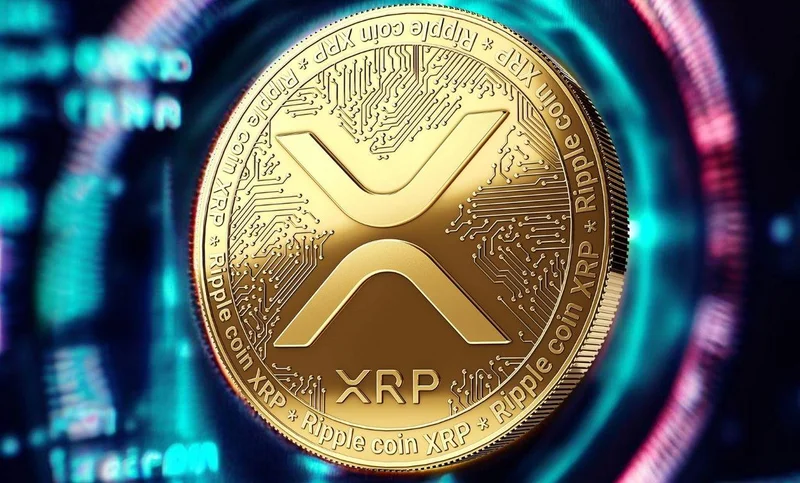The Gatekeepers Have Left the Building: Why the Crypto ETF Flood is Now a Mathematical Certainty
The conversation around crypto ETFs has always been a tedious game of regulatory tea-leaf reading. For years, the market has fixated on the SEC’s every move, parsing obscure legal filings and tracking arbitrary deadlines with the intensity of Cold War Kremlinologists. That entire paradigm is now obsolete. According to Bloomberg’s top ETF analyst, Eric Balchunas, the odds of approval for a wave of new products—including a Solana, Litecoin, and XRP ETF—are no longer a matter of speculation. They are, in his words, "100%."
This isn't hyperbole. It’s the logical conclusion of a quiet, bureaucratic maneuver that has fundamentally rewired the approval process. The drama of the 19b-4 filing "clock," which dictated the SEC's review timeline and created focal points for market anxiety, has been rendered meaningless, a development that has led one Bloomberg analyst puts odds of Litecoin, Solana and XRP ETF approvals at 100% after 19b-4s rendered 'meaningless'. The SEC’s accelerated approval of new generic listing standards for crypto ETFs has effectively ended the debate before it even begins.
What we are witnessing is a procedural checkmate. The agency, under its new chairman Paul Atkins (who took the helm in April), has shifted its stance from gatekeeper to traffic controller. The primary question is no longer if these products will be approved, but how quickly the paperwork can be processed. And I've looked at hundreds of these regulatory shifts over the years; this particular one feels less like a policy change and more like a dam breaking.
The Old Game Is Over
To understand the magnitude of this shift, you have to appreciate how the old system worked. It was a convoluted, two-step process designed for maximum regulatory discretion. First, an exchange like Nasdaq or the Cboe would file a 19b-4 form on behalf of an issuer like Grayscale or BlackRock. This started a 240-day shot clock, creating the deadlines everyone obsessed over. The second part was the S-1 registration statement from the issuer itself. The SEC could, and often did, use the 19b-4 process to delay, deny, or simply run out the clock.
That game is over. The new generic listing standards are the equivalent of a pre-approved blueprint. The old way was like petitioning the city council for a zoning variance for every single house you wanted to build—a bespoke, unpredictable, and political process. The new way is the city publishing a pre-approved building code. As long as your structure (the ETF) meets the established criteria, you don't need a special hearing. You just file the plans and start building.

One of the key criteria is that the underlying asset—be it Solana, XRP, or Dogecoin—must have a futures contract listed on a designated market for at least six months. This effectively outsources a significant portion of the SEC’s due diligence. The existence of a regulated futures market is now the primary proxy for an asset’s maturity and legitimacy. And as Balchunas notes, Coinbase Derivatives already lists futures for a whole slate of digital assets, including Litecoin, Polkadot, Avalanche, Cardano, and yes, even an `XRP crypto` contract. The pipeline is already built and stocked. This development is arguably the most significant piece of `XRP news` for anyone trying to formulate a long-term `XRP price prediction`, as it removes the single largest regulatory obstacle.
From a Trickle to a Tsunami
The prior odds from the Bloomberg team were already high, around 90%—or to be more exact, 95% for top contenders like Solana and Litecoin. But moving from 95% to 100% is not an incremental step. It’s a phase transition. It’s the difference between a high probability and a foregone conclusion. The recent slew of 19b-4 withdrawals for various spot crypto ETFs wasn’t a sign of defeat; it was a recognition that the filings were no longer necessary. The issuers are simply re-routing their applications through the new, streamlined system.
The historical precedent here is telling. Balchunas points out that when the SEC implemented similar generic listing standards for stock and bond ETFs, the number of launches tripled. He projects we could see "north of 100 crypto ETFs launched in the next 12 months." This isn't just about giving investors access to the `price of XRP` or Solana in a brokerage account. It's about to trigger a Cambrian explosion of crypto-based financial products. We’ll see index funds, thematic baskets, and strategies that are currently confined to the esoteric world of DeFi packaged for mainstream consumption.
This raises a new set of critical questions that the market hasn't even begun to price in. After the initial euphoria, what happens when the digital shelf space at Fidelity and Charles Schwab is flooded with dozens of nearly identical products? Will the massive first-mover advantage enjoyed by the spot `Bitcoin` and `Ethereum` ETFs be diluted into irrelevance? How will the average investor, who can barely distinguish `BTC` from `Ethereum`, possibly differentiate between a Cardano ETF and a Polkadot ETF when both are trading side-by-side? The battle for regulatory approval is over. The war for assets under management, liquidity, and investor attention is about to begin, and it will be brutal.
A Regulatory Formality
My analysis is this: the SEC has effectively conceded. Under new leadership promising a friendlier approach, the agency has swapped active, discretionary gatekeeping for a passive, criteria-based checklist. The core function of vetting an asset's suitability has been offloaded to the futures markets. The debate is no longer about the intrinsic merit of `XRP`, `Solana`, or any other token. It is now a simple, bureaucratic process. The "approval" is a formality. The real story is the impending, chaotic, and unprecedented flood of capital and competition that will define the next era of digital asset investing. The floodgates aren't just unlocked; they've been removed from their hinges.
